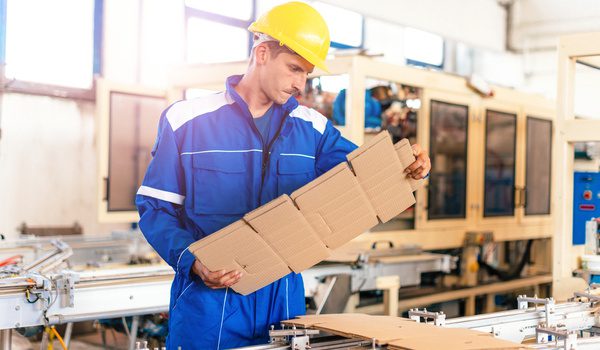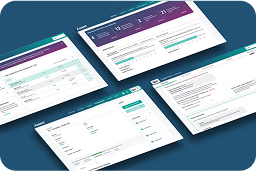The automotive supply chain compliance landscape is facing a major inflection point in 2025. Global regulations are expanding in scope while enforcement is becoming more rigorous. On top of that, automotive regulatory compliance professionals have to deal with per- and polyfluoroalkyl substances (PFAS) restrictions, the Uyghur Forced Labor Prevention Act (UFLPA), and digital product passports (DPPs) in the EU.
Naturally, many compliance professionals think the best way to manage the budget is to bring their automotive regulatory compliance program in-house (or keep it there). While that’s understandable, it’s also a recipe for additional stress. In 2025, manual processes, legacy systems, and static supplier declarations won’t cut it.
The truth is simple: dynamic, traceable, and auditable data is the standard. On top of that, sustainability and human rights due diligence are no longer “nice-to-have” features of a supply chain sustainability management program — they’re essential to your business. They are mandated responsibilities that come with definitive non-compliance penalties.
What does that mean specifically for automotive industry compliance? While no new global automotive regulations have been introduced in 2025, previously adopted frameworks — especially those in human rights and environmental domains — are entering into new stages of enforcement, expansion, or implementation this year, especially around PFAS, forced labor, and sustainability data tied directly to vehicles.
Manufacturers need to be prepared to:
- Address existing data and compliance gaps across automotive supply chains
- Adopt continuous supplier engagement and automation strategies
- Shift their compliance program to a proactive approach for future-proofed and long-term success
Automotive Regulatory Compliance in 2025
Automotive manufacturers need to be aware of four specific tiers of regulatory impacts: PFAS restrictions, the UFLPA, EU due diligence and ESG disclosure regulations, and DPPs. Let’s dive in:
PFAS Restrictions & Global Chemical Compliance
PFAS, also known as “forever chemicals,” have been under the microscope over the last few years. As a result, global regulations have tightened. And while the EU’s broad restriction proposal is still under review, there are existing national-level PFAS bans and restrictions in place in both the U.S. and the EU.
For example, in the U.S., Maine signed a bill into law that regulates the sale of products with PFAS back in April 2024. This legislation was subsequently amended and now includes bans for specific product types, starting January 1, 2026:
- Cleaning products
- Cookware products
- Cosmetic products
- Dental floss
- Juvenile products
- Menstruation products
- Textile articles (with exception)
- Ski wax
- Upholstered furniture
- Products listed that do not contain intentionally added PFAS but are sold, offered for sale, or distributed for sale in a fluorinated container or in a container that otherwise contains intentionally added PFAS
Going forward, additional products will be banned every year, eventually resulting in a complete PFAS ban in January 2032. While that seems far off right now, the work that will be required to remove PFAS from your automotive supply chain will be extensive.
REACH Regulatory Compliance for Automotive Companies
On top of that, the Registration, Evaluation, Authorisation, and Restriction of Chemicals (REACH) Regulation has focused on specific groups of PFAS chemicals.
- Perfluorocarboxylic acids (C9-14 PFCAs), their salts, and related substances have been restricted in the EU/EEA since February 2023, following a decision by the European Commission based on a proposal from German and Swedish authorities
- Undecafluorohexanoic acid (PFHxA), its salts, and related substances will face restrictions in the EU/EEA starting in April 2026. This decision by the European Commission is based on a proposal from the German authorities (2019), with the European Chemicals Agency (ECHA)’s scientific committees adopting their opinion on it in 2021
- In January 2022, ECHA submitted a restriction proposal for PFAS used in firefighting foams
In addition to those restrictions and proposals, a number of PFAS chemicals have been included on the Candidate List of substances of very high concern (REACH SVHC).
These developments are already affecting automotive manufacturers and suppliers in 2025. PFAS may have been used in automotive manufacturing, from coatings and interior and exterior treatments to manufacturing components. In fact, PFAS were used in chrome plating operations as fume suppressants.
That’s why, starting now, developing a proactive automotive supply chain program and understanding the scope of your risk is especially crucial.
UFLPA Compliance: Enforcement is Expanding
Having been enacted back in 2022, the UFLPA has affected manufacturers around the globe, with hundreds of thousands of dollars worth of goods being detained at the U.S. border by U.S. Customs and Border Protection (CBP).
Expanding UFLPA enforcement should raise red flags for automotive supply chain compliance.
The UFLPA’s scope is such that automotive manufacturers must complete due diligence on high-risk materials to prove they were not sourced from the Xinjiang Uyghur Autonomous Region (XUAR) of China, either in whole or in part.
The UFLPA’s enforcement has only broadened since its introduction, and automakers are of particular focus. In 2024, a report from the U.S. Senate Committee on Finance noted that several well-known automotive manufacturers were impacted by forced labor risks.
That is corroborated by the exponential increase in goods detentions specifically in the automotive and aerospace industries, rising by an astonishing 1,580% between 2023 and 2024.
As a result, the Committee recommended that the Department of Homeland Security (DHS):
- Speed up work to identify facilities in XUAR and add them to the UFLPA Entity List
- Update the list of high-priority sectors for UFLPA enforcement
- Improve information-sharing regarding enforcement
- Provide clearer direction about how to detect forced labor in supply chains
Since forced labor violations are buried deep within the automotive parts supply chain, identifying potential risks can be especially difficult. On top of that, due to the electronics and critical minerals used, automotive manufacturers in particular face unique exposure to forced labor violations, especially for electronics and electric vehicle (EV) battery materials.
With CBP expanding its UFLPA Entity List and its expectations for traceable supplier data, companies must prepare to proactively show due diligence to avoid product seizures at the border.
CSRD & CS3D: EU Due Diligence & ESG Disclosure Regulations
The EU Corporate Sustainability Due Diligence Directive (CS3D) and the Corporate Sustainability Reporting Directive (CSRD) are progressing toward enforcement. Both of these regulations will add reporting requirements to automotive manufacturers’ plates.
(You may be asking: What is the CSRD? Check out our article to learn more.)
In 2025, companies are expected to begin formal reporting preparation or compliance steps, depending on their size and location. Automotive suppliers can expect automotive OEMs to push reporting burdens down to suppliers, requiring validated human rights and ESG data across supply chains.
As you might imagine, this means we get to repeat our favorite phrase again: proactive compliance will be crucial, as gathering this automotive sustainability data will take time and effort.
Digital Product Passports in the EU
While EU digital product passport regulations are not expected to be fully rolled out until after 2025, the groundwork is being laid as we speak. In fact, EU Batteries Regulation DPPs, which apply to electric vehicles, are slated to be the first to go live, and data models are currently being built.
Automotive suppliers will find themselves increasingly required to collect and share structured, auditable material and sustainability data that meets digital product passport standards. This data collection will take time, effort, and resources dedicated to automotive supply chain management.
That’s why starting now and getting ahead of the actual requirement will help automotive manufacturers like you stay ahead of the curve and avoid being caught on the back foot.
Get Started With an Automotive Supply Chain Solution
With manufacturers facing a litany of global regulations — and considering how fast and suddenly the regulatory landscape can change — it’s vital for manufacturers to understand what tools they have at their disposal now.
Assent helps automotive manufacturers stay ahead of emerging risks by automating compliance workflows, simplifying supplier engagement, and providing real-time insights into product and supplier data.
Through scalable automotive supply chain solutions for PFAS tracking, human rights due diligence, and material disclosures, Assent reduces the operational burden while enabling deep supply chain transparency. This results in reduced risk exposure, faster responses to regulatory changes, and measurable cost and time savings.
Book a demo today to learn how we can help you prepare for these regulatory updates and any that are on the horizon.








